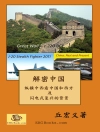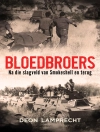Europe’s critical infrastructure is a key concern to policymakers, NGOs, companies, and citizens today. A 2006 power line failure in northern Germany closed lights in Portugal in a matter of seconds. Several Russian-Ukrainian gas crises shocked politicians, entrepreneurs, and citizens thousands of kilometers away in Germany, France, and Italy. This book argues that present-day infrastructure vulnerabilities resulted from choices of infrastructure builders in the past. It inquires which, and whose, vulnerabilities they perceived, negotiated, prioritized, and inscribed in Europe’s critical infrastructure. It does not take ‘Europe’ for granted, but actively investigates which countries and peoples were historically connected in joint interdependency, and why. In short, this collection unravels the simultaneous historical shaping of infrastructure, common vulnerabilities, and Europe.
Table des matières
General Introduction
1. Europe’s Critical Infrastructure and its Vulnerabilities: Promises, Problems, Paradoxes; Erik van der Vleuten, Per Högselius, Anique Hommels and Arne Kaijser
PART I: CONNECTING A CONTINENT
Introduction
2. Natural Gas in Cold War Europe: The Making of a Critical Infrastructure; Per Högselius, Anna Åberg, and Arne Kaijser
3. Inventing Electrical Europe: Interdependencies, Borders, Vulnerabilities; Vincent Lagendijk and Erik van der Vleuten
PART II: NEGOTIATING NEIGHBOURS
Introduction
4. An Uneasy Alliance: Negotiating Infrastructures at the Finnish-Soviet Border; Karl-Erik Michelsen
5. Bulgarian Power Relations: The Making of a Balkan Power Hub; Ivan Tchalakov, Tihomir Mitev and Ivaylo Hristov
6. Border-Crossing Electrons: Critical Energy Flows to and from Greece; Aristotle Tympas, Stathis Arapostathis, Katerina Vlantoni and Yiannis Garyfallos
PART III: COPING WITH COMPLEXITY
Introduction
7. EUROCONTROL: Negotiating Transnational Air Transportation in Europe; Lars Heide
8. Connections, Criticality, and Complexity: Norwegian Electricity in its European Context; Lars Thue
9. In Case of Breakdown: Dreams and Dilemmas of a Common European Standard for Emergency Communication; Anique Hommels and Eefje Cleophas
Conclusion
10. Europe’s Infrastructure Vulnerabilities: Comparisons and Connections; Anique Hommels, Per Högselius, Arne Kaijser and Erik van der Vleuten
Bibliography
Index
A propos de l’auteur
Per Högselius is Associate Professor at the Division of History of Science, Technology and Environment at the Royal Institute of Technology (KTH), Stockholm, Sweden. His research has focused on international aspects and in particular East-West relations in the history of science, technology, and environment. Most recently he published Red Gas: Russia and the Origins of European Energy Dependence (2013).
Anique Hommels is Associate Professor at the Science, Technology & Society (MUSTS) research group, Maastricht University, the Netherlands. She has previously published Unbuilding Cities: Obduracy in Urban Sociotechnical Change (2005). Her current research focuses on vulnerability in technological cultures, urban disasters, and standardization in emergency communication.
Arne Kaijser is Professor of History of Technology at the Royal Institute of Technology (KTH), Stockholm, Sweden. His main research interests concern infrastructure, institutions, and environment in historical perspective. Together with Erik van der Vleuten he edited Networking Europe: Transnational Infrastructures and the shaping of Europe, 1850-2000 (2006).
Erik van der Vleuten is Professor of History of Technology at Eindhoven University of Technology, the Netherlands, and scientific director of the Foundation for the History of Technology(SHT). In 2013-2015 he chaired the Pan-European research network
Tensions of Europe: Technology and the Making of Europe. Erik studies the mutual shaping of infrastructure, societal, and environmental changes.












